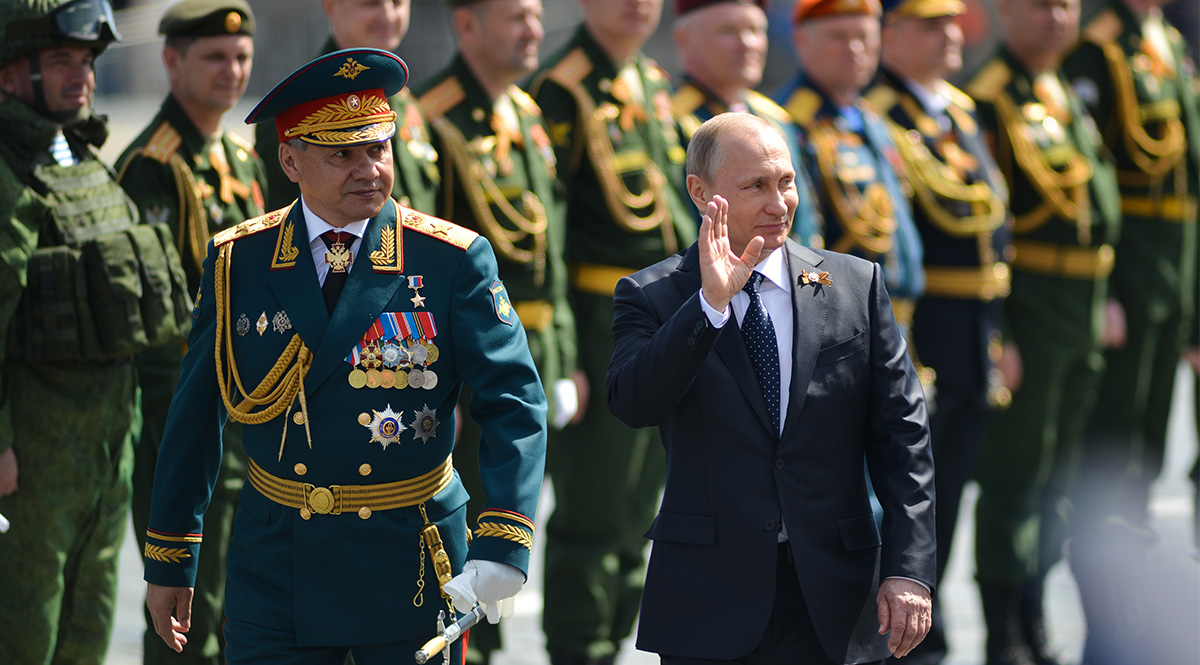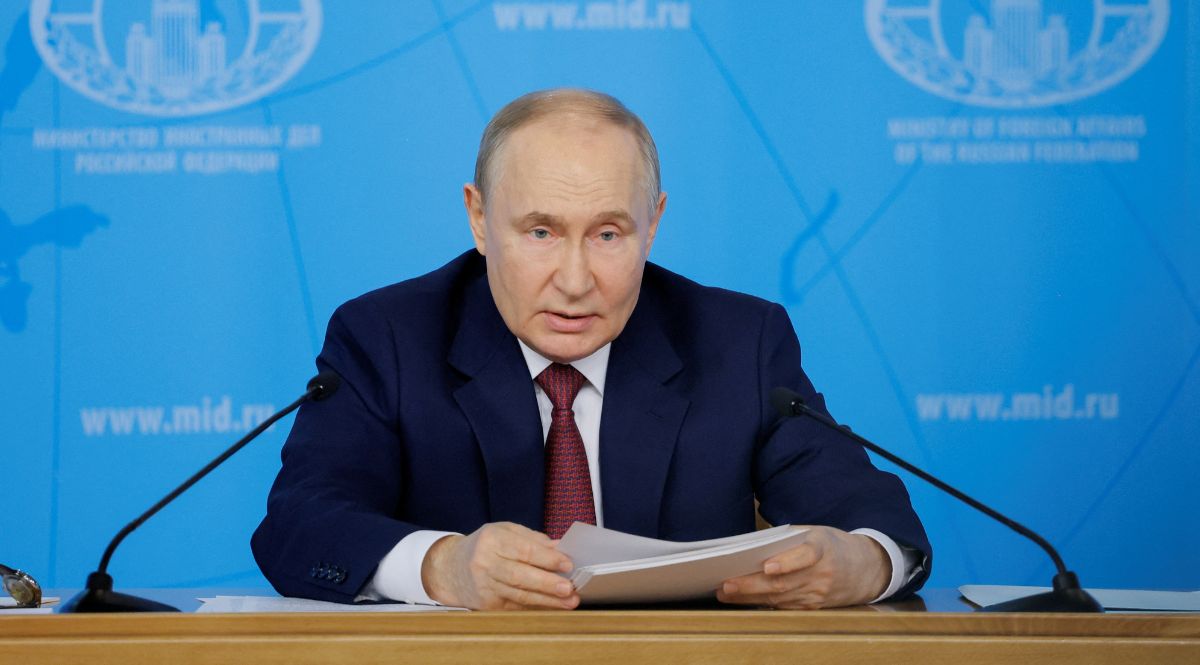Ocean 2024 Exercises Demonstrate Russian Naval Capabilities, Strategic Signalling
Russia recently conducted its largest naval exercises since the collapse of the USSR. They took place on three oceans and six seas. All Russian fleets and flotillas took part, apart from the Black Sea Fleet, which is involved in the war in Ukraine, along with the Chinese navy. The manoeuvres were a politico-military signal to NATO to demonstrate Russian naval capabilities. They may also indicate a strengthening of the importance of naval policy for Russia.
.png) Alexander Kazakov/Kremlin Pool / Zuma Press / Forum
Alexander Kazakov/Kremlin Pool / Zuma Press / Forum
The Ocean manoeuvres, which took place from 10-16 September, involved 90,000 troops and more than 400 ships and support vessels. Russia used all available resources of its navy not engaged in war with Ukraine. Moreover, more than 120 aircraft and helicopters, some 7,000 units of military equipment and numerous drones were used. Coastal defence units, ships and aviation of the FSB Coast Guard and National Guard naval forces were also engaged. The exercises took place in the waters of the Atlantic, Arctic, and Pacific oceans and the Baltic, Barents, Japanese, Caspian, North, and Mediterranean seas. In the area of the Russian military base in Tartus, located in Syria, in the Mediterranean Sea, Syrian naval units also took part in the manoeuvres, while in the Sea of Japan, four surface warships and two Chinese support ships supported by 15 aircraft and helicopters.
In the Atlantic direction, the Northern Fleet played the role of NATO countries, including the U.S. In the first stage of the drills, the military command centres practised deploying force groupings to designated areas, transitioning to war mode, and operating from reserve and mobile command centres, among others. As part of the second phase, combat operations were employed, during which strategically important facilities and “adversary” forces were hit on land and at sea. Interaction with unmanned aviation, including reconnaissance units, and with strike vehicles of various types was practised. A lot of attention was also paid to fighting against unmanned boats and underwater drones, indicating that Russia is learning lessons from the war with Ukraine.
Signalling Towards NATO
In his speech opening the exercises, Vladimir Putin stated that their purpose would be to signal deterrence towards the U.S. and other NATO countries. He added that, in the Russian assessment, the U.S. is violating the established security architecture and balance of power in the Asia-Pacific region through aggressive actions. He also announced that Russia would continue to strengthen its navy, including its strategic nuclear component.
An important element of the demonstration was, in particular, intensive operations in the Baltic, Barents, and North Seas and in the Arctic and Atlantic oceans. Groups of ships, which included units from various Fleets, practised there, among other things, repelling an attack by unmanned systems, conducting radio-electronic warfare and missile attacks. Coastal defence forces also actively trained in the Baltic Sea, and naval operations were supported by Russian strategic aviation. Coastal defence forces also actively trained in the Baltic Sea, while at the naval operations were supported by Russian strategic aviation.
By demonstrating that Russia is capable of deploying almost all of its ships at short notice, including nuclear weapons carriers, the use of which was also simulated, the Ocean manoeuvres can be considered an important element of deterrence. The demonstration of capabilities in the Baltic was also Russia’s response to Finland and Sweden joining the Alliance. Among other things, they demonstrated the Russian side’s readiness to defend this basin—crucial for the local economy, as almost 30% of goods delivered to and from Russia by sea are transported through the Baltic Sea. Thus, the Ocean manoeuvres can be considered an important part of Russia’s strategic communication vis-à-vis the U.S. and other NATO countries.
Exercises of this scale and nature were intended to prove that, despite the military operations in Ukraine and the losses resulting from them, the Russian government has not given up on reforming the armed forces. Moreover, on the day of the end of the manoeuvres, Putin signed a decree to increase the number of soldiers to 1.5 million and the entire armed forces to 2,389,000 posts. Russia also wanted to show that it was capable of launching an attack on Alliance territory from all strategic directions.
At the same time, due to its military involvement in Ukraine, Russia has been unable to organise large exercises involving ground troops for another consecutive year—the last were the Vostok drills held in September 2022. To demonstrate its capabilities, therefore, including responding to this year’s NATO Steadfast Defender exercise, which involved 90,000 troops and had a significant component on the Alliance’s Eastern Flank, the Russian government had to focus on the use of the navy.
Russia’s Broader Strategic Goals
The organisation of a naval exercise of this scale, in addition to testing the ability to conduct wide-ranging naval operations in all strategic directions, shows a partial shift in the strategic thinking of the Russian authorities, for whom naval capabilities were previously not as important as nuclear and land-based capabilities. The strengthening of the importance of maritime policy is evidenced by the creation of the Maritime College in August, headed by an advisor to the Russian president, Nikolai Patrushev, who previously served as secretary of the Russian Security Council. The college comprises three councils, one for strategic naval development, a second for the development and provision of maritime activities, and the third is the defence of Russia’s national interests in the Arctic. The former will be tasked with assessing the state of the navy and identifying maritime threats, presumably also based on the conclusions of the Ocean manoeuvres. Thus, the exercises supported the strategy of enhancing Russia’s naval capabilities.
The increasing military cooperation between Russia and China is also an important signalling element, mainly towards the U.S. Already in previous years, the two countries held regular joint naval exercises and the Chinese armed forces took part in the 2018 and 2022 Vostok drills. A few days after the end of the Ocean exercise, Russia and China also launched another one with the codename Co-operation 2024. The frequency of joint activities makes it possible to conclude that the two countries have developed procedures for military cooperation, especially naval and aviation. The aim of this cooperation and the development of Russia’s naval capabilities will also be to exploit opportunities related to the transport of goods and raw materials via the Northern Sea Route. This also fits in with the Russian government’s perception of the Arctic as a place of increasing military and economic competition with NATO countries.
Conclusions and Recommendations
The Ocean exercises were the first major demonstration of Russia’s readiness to implement the provisions of its maritime doctrine, adopted in 2022, which is explicitly confrontational towards the U.S. and NATO. China’s participation in these manoeuvres was also an anti-Western demonstration. Both countries thus signalled that military cooperation is one element of their policies aimed at revising the world order.
Such large-scale exercises have also shown that in the coming years it may become a priority for the Russian state to rebuild its naval capability, depleted since the fall of the Soviet Union. In this respect, Russia is directly challenging the United States. The development of naval capabilities is also part of Russian foreign policy, which is increasingly focused on developing relations with the countries of the Global South. However, the protracted war in Ukraine and the associated costs will make it more difficult for Russia to expand its naval capabilities.
During the Ocean manoeuvres, Russia focused on a demonstration of force in the waters bordering NATO countries. In doing so, the Russian government once again proved that it sees the Alliance as the main threat to state security, both militarily and economically. It is to be expected that also in the maritime area, Russia will focus on building up its capabilities primarily in the western and northern strategic directions. This will be important for NATO’s Eastern Flank states, but also for the Arctic region.
In response to the Russian actions, it is worthwhile for NATO states to emphasise increased cooperation between the allied states’ navies of the Baltic Sea, North Sea, and Arctic Ocean in particular, and to strengthen air and missile defence systems. The expansion of allied naval capabilities in the Baltic will be important for the protection of, among other things, critical infrastructure located there, including transmission networks and pipelines (key to Poland’s security, among others), which are also exposed to hybrid activities, including diversion and sabotage. It will also be an important element in signalling to Russia that the Alliance is ready to defend its entire territory.



.jpg)

